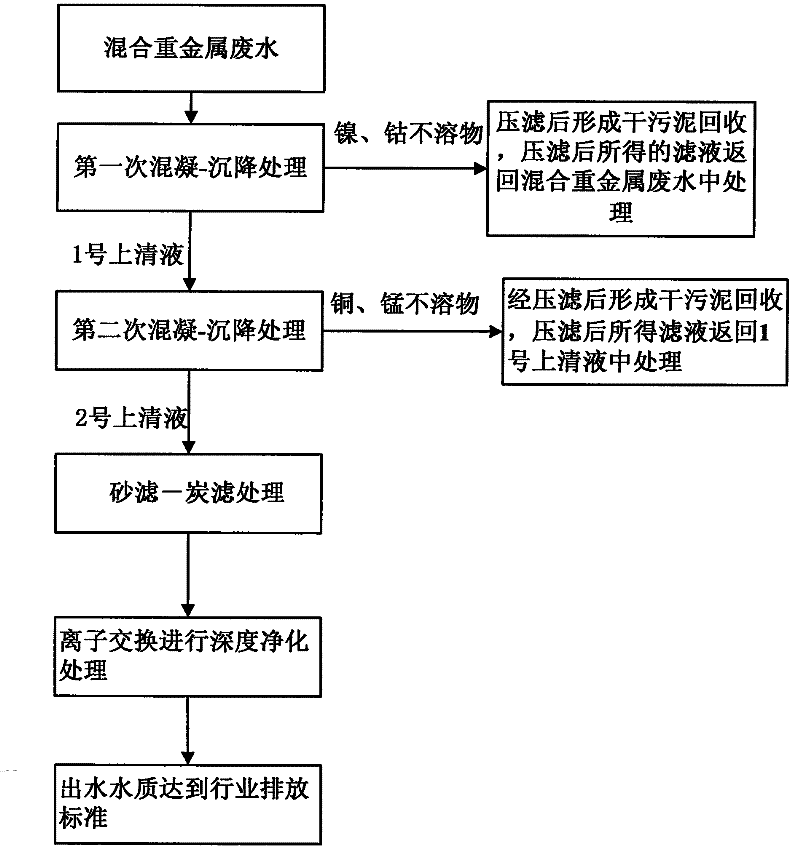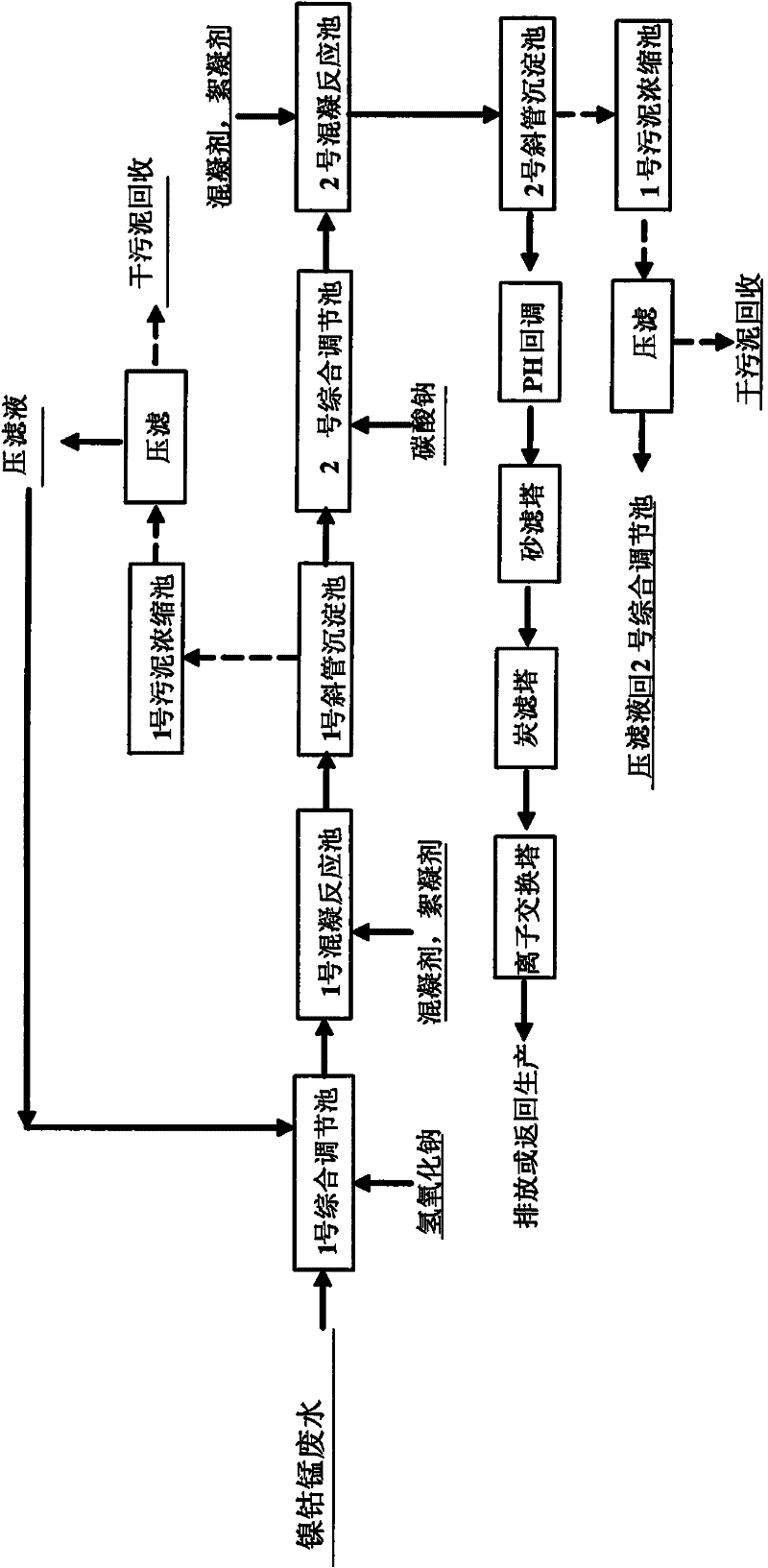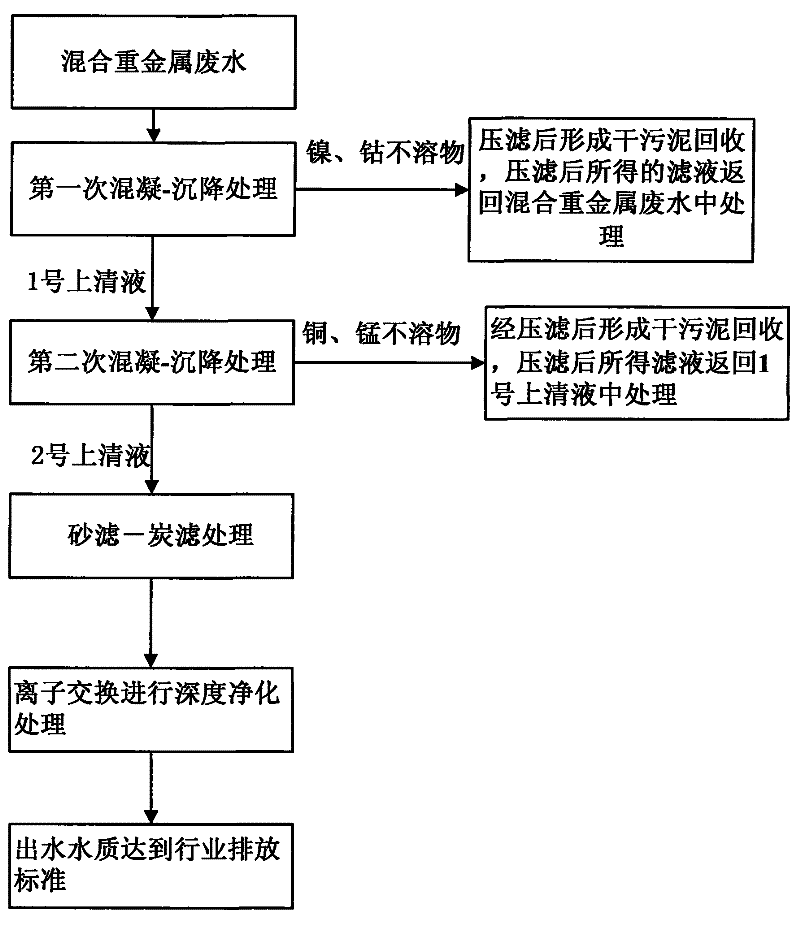Treatment method of nickel-cobalt-manganese wastewater produced in the process of waste battery treatment
A treatment process and waste battery technology, applied in chemical instruments and methods, neutralized water/sewage treatment, water/sewage multi-stage treatment, etc., can solve problems such as waste of water resources, easy blockage of membrane pores, secondary pollution, etc. Achieve the effects of high metal recovery rate, reasonable process flow and good working environment
- Summary
- Abstract
- Description
- Claims
- Application Information
AI Technical Summary
Problems solved by technology
Method used
Image
Examples
Embodiment 1
[0046] In the raw nickel-cobalt-manganese wastewater: PH≈6.5, total nickel 493.98mg / L, total cobalt 115.79mg / L, total manganese 1000mg / L, total copper 5000mg / L, and total iron 1.14mg / L.
[0047] The treatment method of the nickel-cobalt-manganese wastewater produced in the waste battery treatment process comprises the following steps of continuous execution:
[0048] (1) Nickel-cobalt-manganese wastewater is subjected to step-by-step coagulation-sedimentation pretreatment: add saturated sodium hydroxide solution to adjust the pH value of the wastewater to 9.5, and after blowing and stirring for 0.5h, the wastewater is introduced into the coagulation reaction tank, and an appropriate mixing agent is added. Coagulant, add 500g polyaluminium chloride and 600g polyacrylamide to each cubic meter of nickel-cobalt-manganese waste water, blow and stir for 0.5h, and then pump the turbid solution into the inclined tube sedimentation tank for sedimentation and separation to obtain No. 1 ...
PUM
| Property | Measurement | Unit |
|---|---|---|
| height | aaaaa | aaaaa |
| height | aaaaa | aaaaa |
| height | aaaaa | aaaaa |
Abstract
Description
Claims
Application Information
 Login to View More
Login to View More - R&D
- Intellectual Property
- Life Sciences
- Materials
- Tech Scout
- Unparalleled Data Quality
- Higher Quality Content
- 60% Fewer Hallucinations
Browse by: Latest US Patents, China's latest patents, Technical Efficacy Thesaurus, Application Domain, Technology Topic, Popular Technical Reports.
© 2025 PatSnap. All rights reserved.Legal|Privacy policy|Modern Slavery Act Transparency Statement|Sitemap|About US| Contact US: help@patsnap.com



